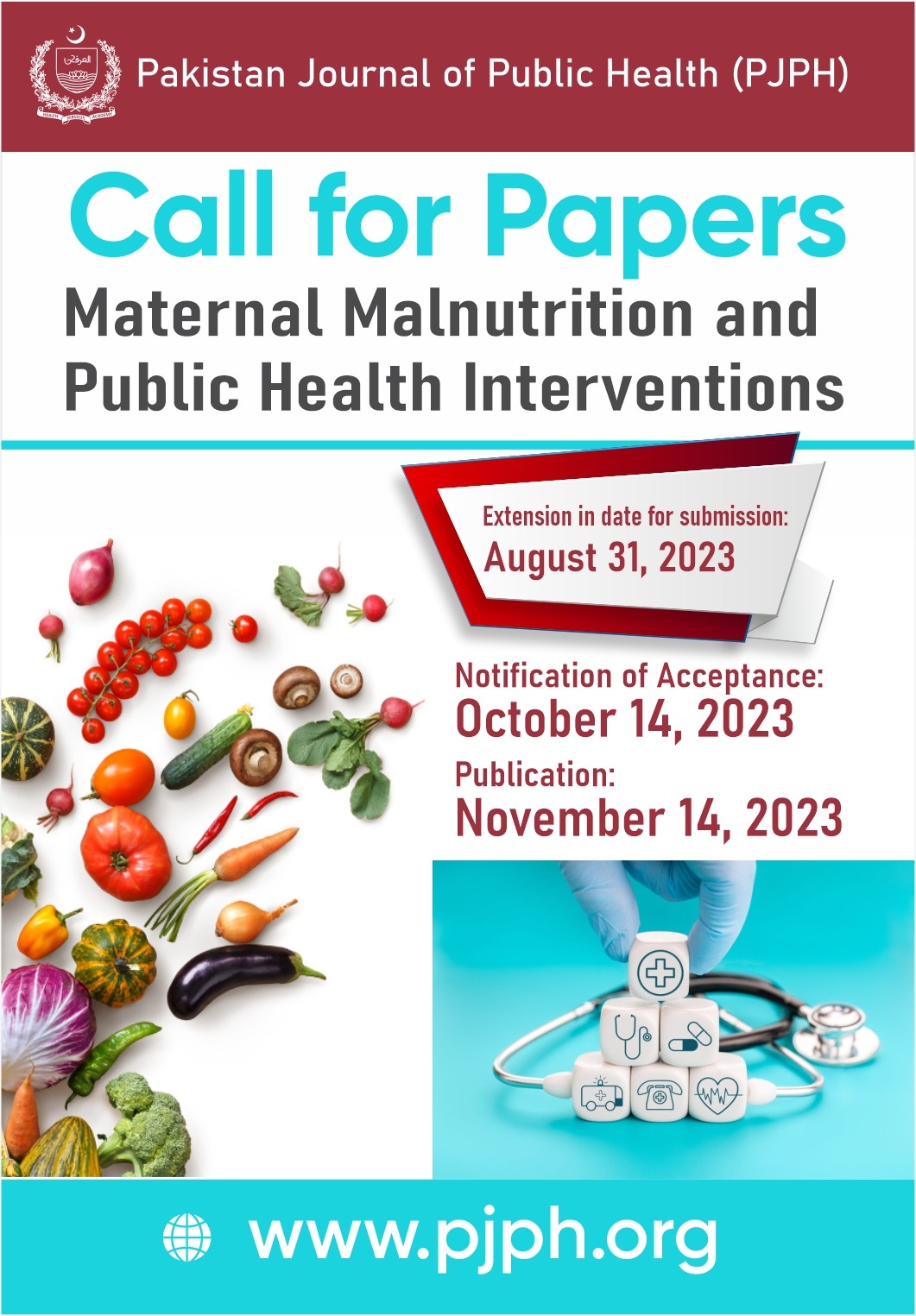A ASSESSMENT OF RISK FACTORS AND DETERMINATION OF VACCINE EFFICACY FOR MEASLES OUTBREAK DURING APRIL 2017 IN DHOK KAZIN, ISLAMABAD
DOI:
https://doi.org/10.32413/pjph.v8i4.124Keywords:
Risk factors, misconception of vaccination, infection control, measles outbreak, vaccinationAbstract
Background: On 13th April 2017, 3 measles cases were reported in Dhok Kazin, Islamabad to National Institute of Health, Islamabad. Federal Disease Surveillance & Response Unit on request of Islamabad Capital Territory (ICT) health administration started disease outbreak investigation and active case finding. The study was aimed to identify risk factors associated with disease outbreak, to assess vaccine coverage and vaccine efficacy in the outbreak area, and to suggest control measures.
Methods: To determine possible risk factors age and sex matched case-control study was conducted in April, 2017. A case was defined as "Any resident of Dhok Kazin, presented with fever and maculopapular rash with any of signs/symptoms like coryza, conjunctivitis, cough, otitis media or pneumonia after March 20 to April 30, 2017". For each case 04 matched controls were selected. A structured questionnaire prepared to collect data. Vaccine coverage survey was conducted. Uni and multivariate analyses and vaccine efficacy were calculated.
Results: A total of 14 cases identified including 11 cases found on active search. Cases were compared with 57 matched controls. Mean age was 39 months (range 08- 132 months). Among cases male to female ratio observed was 1:2.5. Overall attack rate was 1.2%, while most severely affected age-group was <12 months (AR=10.3%). The most common complications were diarrhea n=8 (57.1%) and pneumonia n=1 (7.1%). On vaccine coverage survey in 230 households, 31(70.5%) out of 44 children checked were vaccinated. The un-vaccinated children had attack rate of 14.3% while vaccinated had attack rate of 6.7%. The vaccine efficacy calculated was 53%. Significant association found in risk factors were; contact with positive case [OR 19.5, 95% CI; 4.5-84, P=0.00], unvaccinated children [OR=10.0, 95%, CI;1.2.0-49.3, P= 0.003], Mother illiteracy [OR 10.2, 95% CI; 2.5-41, P=0.00], Misconception about vaccination [OR 13.2, 95%, CI;3.1-57.1, P=0.00), vaccinator not visited home as a part of outreach activity [OR=6.4, 95%CI;1.7-23.4, P=0.00]. Reasons for non-vaccination were found to be misconception about vaccination (OR=34.8, 95%CI=5.5-219.7) and mother's illiteracy (OR=6.4, 95%CI=1.2-34.8).
Conclusion: Most severely affected age group was 12 months and below. Low immunization rates were the most probable cause of outbreak. Case contacts, partial vaccination, misconception of vaccination, no visit of vaccinator to home, and mother's education were risk factors significantly associated with Measles outbreak. Findings were shared with the district health authorities for implementation of control measures.






